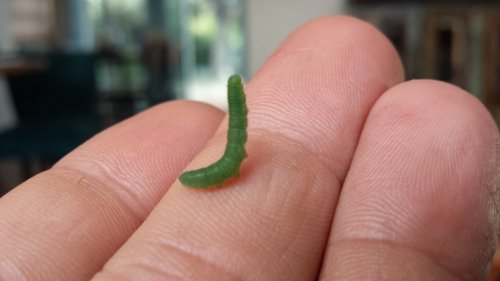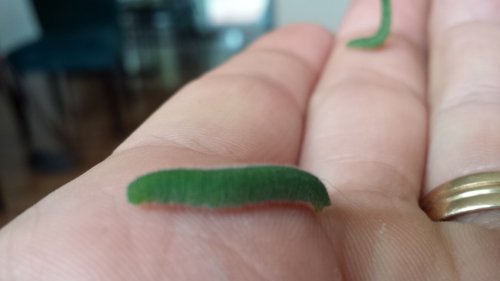KrinsCham
Member
I grow kale, I live in SoCal what do you expect. This year I have had a well timed infestation of soft green worms. Since they eat kale which is high in calcium I thought they would be good for my Panther. Well he loves them more than anything else. I fed him a few at first without any ill signs, since then he has eaten almost every worm I could find in the garden. In fact he is now picky and only wants green kale worms or super worms.
Has anyone else seen or fed these worms? I will take a picture of the next one I find. They are soft green about an inch long (largest) maybe an 1/8 around. They do produce what is a silk like material that they seem to use as a escape mechanism.
I was thinking of trying to raise these guys as another source of food, has anyone tried that? Once again kale is apparently high in calcium, which should in theory be a more natural bioavailable source of calcium for Chameleons. This makes me think it would be a really healthy variety of food.
Any opinions or advice is welcomed.
Cheers
Has anyone else seen or fed these worms? I will take a picture of the next one I find. They are soft green about an inch long (largest) maybe an 1/8 around. They do produce what is a silk like material that they seem to use as a escape mechanism.
I was thinking of trying to raise these guys as another source of food, has anyone tried that? Once again kale is apparently high in calcium, which should in theory be a more natural bioavailable source of calcium for Chameleons. This makes me think it would be a really healthy variety of food.
Any opinions or advice is welcomed.
Cheers
Attachments
Last edited:



